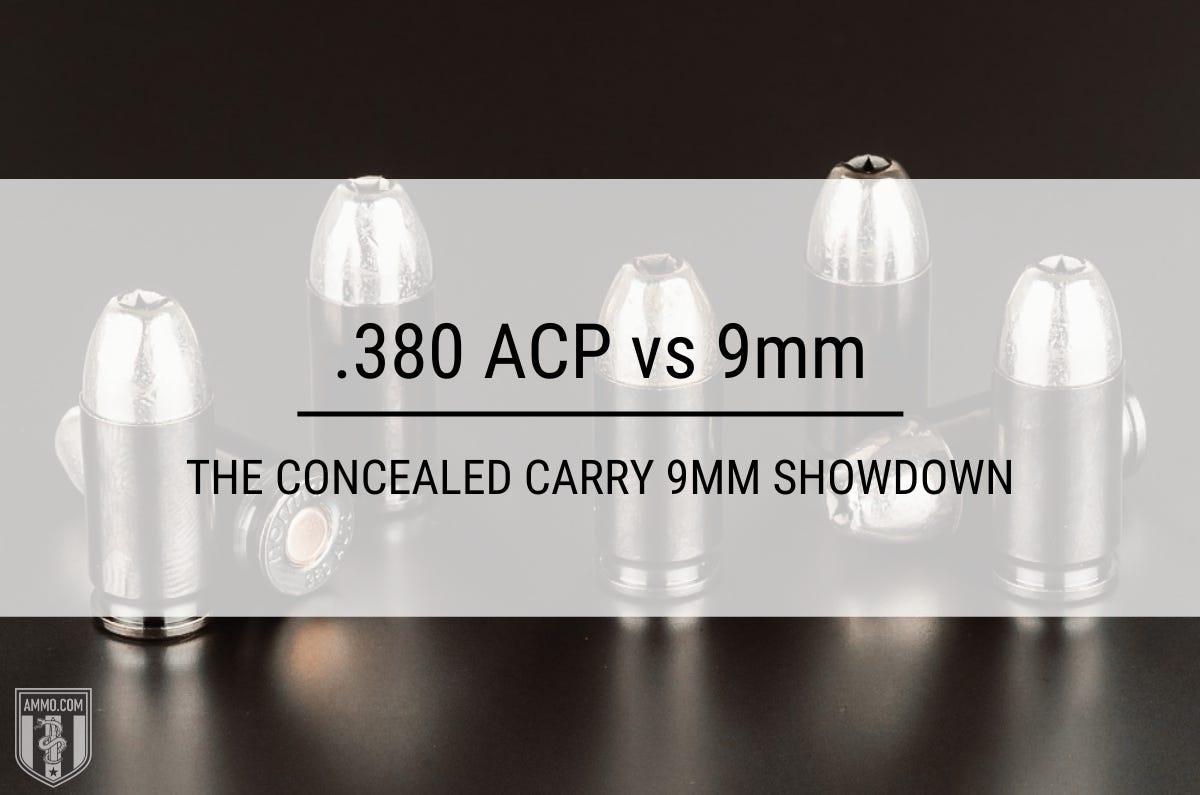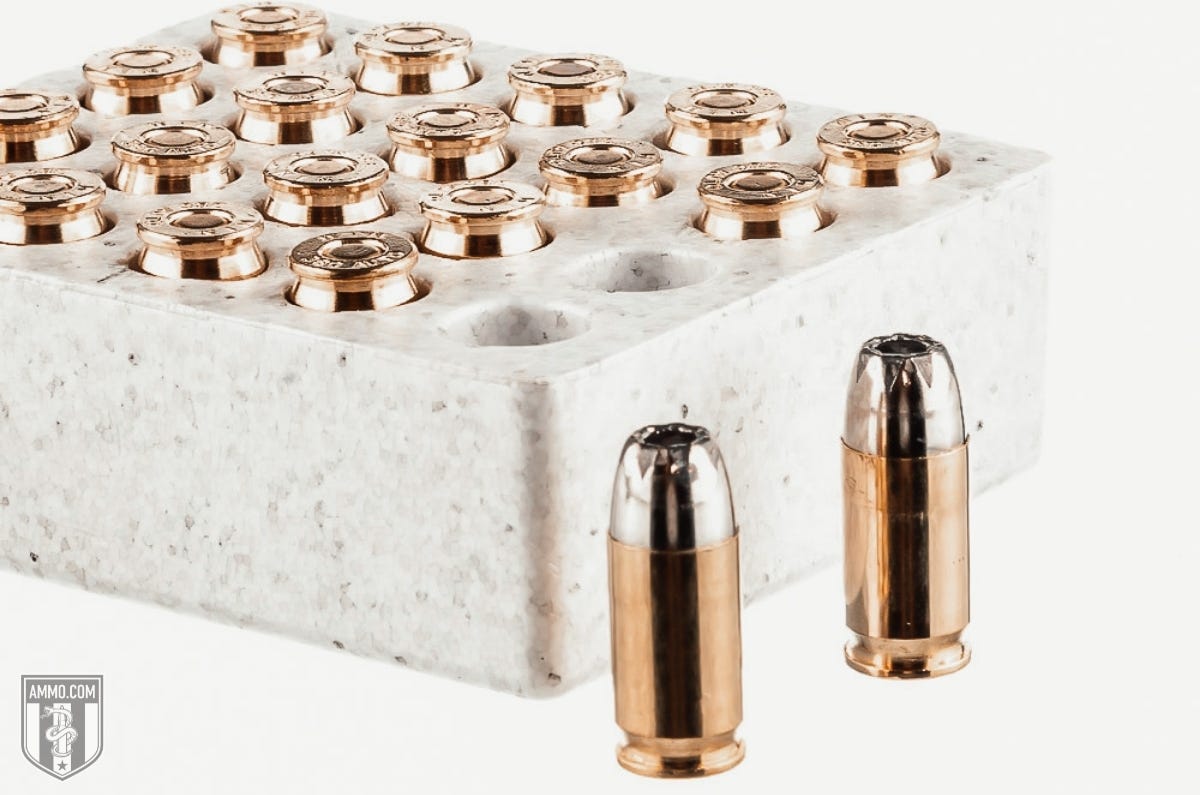.380 ACP vs. 9mm:What’s the Difference?
The .380 Automatic Colt Pistol (ACP) and the 9mm Luger (aka 9x19mm Parabellum, or simply “9mm”) are two of the most popular pistol cartridges. Although both share the same 9mm (0.355”) diameter bullet, the .380 ACP has a shorter case, and is therefore the more anemic round.
I prefer the 9mm for most applications, but my wife loves her 380 Auto. Either cartridge has benefits and drawbacks, so let's dive into why you might choose one over the other.
380 vs. 9mm: Cost
When we compare 380 ACP and 9mm prices, we might assume the 380 will be less expensive because it’s the smaller round. However, that’s not the case. The 9mm is more popular and abundant, which helps lower its price compared to 380 ammo.
The Differences Between .380 and 9mm
The primary differences between the 380 ACP and 9mm are case length and power. The 380 has the shorter case. It contains less propellant, and has less power and recoil as a result. I don’t consider either cartridge to have heavy recoil, although the 380 definitely has less: a major reason why my wife prefers it.
380 vs. 9mm: Size
The 380 and 9mm both fire bullets of the same diameter, but the 9mm cartridge is bigger and fires heavier bullets than the 380 Auto cartridge. The overall length of the 380 ACP is just under 1 inch (0.984 inches), whereas the overall length of the 9mm is 1.169 inches. This is largely due to the 380’s shorter case.
The 380 Auto’s base diameter (0.374 inches) is slightly narrower than the 9mm’s (0.391 inches). The 380 is not bigger than the 9mm in any way.
.380 vs 9mm: Recoil
This is one of the few categories where the .380 ACP is superior. Recoil from a .380 ACP is approximately half that of 9mm Luger. That’s a huge difference, to say the least!
Lower recoil is why my wife wanted to switch to the 380 Auto from her 9mm. It allowed her to be more accurate and flinch less, so she was more comfortable firing her pistol.
Being comfortable with your firearm is one of the most important aspects of self-defense and shooting in general. If you’re uncomfortable while shooting in a defensive situation, you’ll miss the mark more often and put innocent bystanders’ lives at greater risk.
For those like my wife who need a low-recoil cartridge, go with the 380.
.380 ACP vs. 9mm: Stopping Power
Proponents of the 9mm Luger are going to harp on the concept of “stopping power” and assert that the .380 ACP is underpowered
They aren’t wrong on paper. The 9mm is undoubtedly the superior cartridge when it comes to the numbers. But how is stopping power defined, exactly?
Although no column for stopping power exists in the ballistics tables, the FBI has done their best to quantify it. They developed a complex scoring system to evaluate ammunition and its terminal performance in ballistic gelatin after having penetrated multiple barriers. Simply put, a bullet that penetrates no less than 12 inches and no more than 16 into ballistic gelatin (a synthetic substitute for soft tissues) is good for self-defense.
A modern 9mm JHP penetrates bare ballistic gel to an average depth of 13-15 inches. That’s right in the middle of the ideal range specified by the FBI test protocol.
The .380 Auto is a different story. On average, a .380 ACP JHP achieves approximately 9 inches of penetration. That’s pretty bad!
Many detractors of the .380 ACP will point to that number and claim that if you EDC a .380, you need to load it with non-expanding FMJ ammo to get adequate penetration.
380 vs. 9mm: Self-Defense
Its reduced stopping power does not mean the .380 ACP is ineffective as a self-defense round. It simply means you must do your homework before purchasing self-defense ammo for your .380 Auto EDC handgun.
Not all .380 ACP ammo is created equal. If you plan on carrying a Ruger LCP, Kel-Tec P3AT, or any other .380 pistol, then knowing which ammo will give you the penetration you need is critical. As always, you need to practice some with your carry ammo to ensure proper feeding, cycling, and function.
Modern .380 Auto ammo has come a long way since its inception. Newer JHP ammo options have improved on Browning’s original design considerably.
All that being said, the 9mm is still going to be the superior self-defense round. It fires a heavier bullet with more foot-pounds (ft-lbs) of energy behind it, which you’ll see in the ballistics section below.
If you can fire the 9mm Luger and 380 ACP with equal accuracy, then you should choose the more powerful 9mm. If you find that you’re more accurate with a .380, then you have every reason you need to prefer it for EDC.
9mm vs. 380: Concealed Carry
This is where the .380 ACP really shines. A .380 Auto subcompact is a very small gun: simple to conceal and comfortable to carry.
In contrast, a 9mm Luger handgun will be a bit larger. The more powerful cartridge needs more material for its frame and to ensure slide rigidity.
For concealed carry, weight matters.
Your average CCW permit holder is more likely to leave their full-size Glock 17 in the nightstand as opposed to carrying it concealed, as it’s bulky and requires particular fashion for correct concealment.
Compare that to a little Ruger LCP, which can be easily concealed in a pocket holster with minimal effort and discomfort.
Humans naturally avoid pain and discomfort. Although many internet message board commandos claim that concealing a full-size 9mm is “no big deal," I’m willing to wager that they will take the lightweight EDC option if given the choice.
The main draw for a .380 Auto carry gun is its low recoil energy, lightweight construction, thin frame, and easy concealability. Just make sure your shot placement is on point and you’ll be good to go!
.380 vs. 9mm: Handgun Prices
One of the major benefits of a .380 ACP carry gun is that it is simple to manufacture. The blowback action requires fewer parts and therefore reduces the overall cost of manufacturing subcompact .380 pistols.
Many .380 Autos can be purchased for less than $300, with the Ruger LCP being at the top of the list in terms of value.
In general, most 9mm handguns are a bit more expensive. More materials are needed to create a frame and slide that can accommodate larger round’s greater power.
Most 9mm handguns will start at around $400 and go up from there, depending on its manufacturer and bells and whistles (laser grip, reflex sight, etc.).
Read more: .380 ACP vs. 9mm: The Concealed Carry 9mm Showdown







